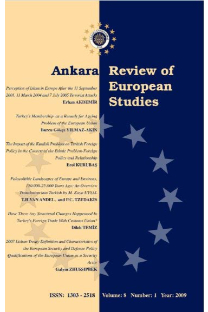Avrupa Birliğine Üye Bazı Ülkelerde, Toprakta ve Arıtma Çamurunda Bulunan Ağır Metaller, Organik Kirleticiler ve Patojenler İçin Örnekleme ve Analiz Yöntemlerinin Uyumlaştırılması
Öz
The objective of this study is to carry out sampling and analysis methods for heavy metals, organic pollutants, pathogens and ınicro-organisms in soil and sewage sludge in soıne EU countries for harmonisation. Council Directive 86/278/EEC on Sewage Sludge is important to regıtlate the use of sewage in agriculture and forest land in such a way as to prevent harmful effects on soil. For this purpose, some practices of Sewage Sludge Directive is based on applications in some European Union Countries and investigated pros and cons of application sewage sludge to agricultural and forest land. In, challenges, potential benefits and legislation. Harmonisation is requested in soıne points such as, common measurement procedure for pH, common analytical methods for heavy metal analysis, sampling strategy, elimination of contaminated soil samples in EU. It is considered that the best method one for harmonisation should be practical, currently available, simply and efficiently, appropriate for a wide range of soil types, range of pH is from 5 to around 8.5, people and environmental friendly for long-term soil protection and provide the desired information. The standards for pH, organic matter and dry matter are accepted and studies agreed with Aqua Regia for digestion. The sampling guidance for sludge for ISO standards requires redrafting and Council Directive 86/278/EEC on Sewage Sludge is needed to revise. A new approach in standardisation work is required to resolve the multiple problems of soil and sludge. This research show that novel studies are in need of working to elaborate one standard for soil, sludge and wastes and also investigations should follow internationally accepted standards, which should be CEN-EN or ISO Standards.
Anahtar Kelimeler:
Toprak, Ar ı tma Çamuru, Ağır Metaller, Organik Kirleticiler, Patojenler, Mikroorganizmalar, Örnekleme ve Analiz Yöntemleri, 86/278/EEC Ar ı tma Çamuru Direktifi, CEN-EN ve ISO Standartlar ı .
Keywords:
Soil, Sewage Sludge, Heavy Metals, Organic Pollutants, Pathogens, Micro-Organisms, Sampling and Analysis Methods, Council Directives 86/278/EEC on Sewage Sludge, CEN-EN and ISO Standards.,
- ISSN: 1303-2518
- Yayın Aralığı: Yılda 2 Sayı
- Başlangıç: 2001
- Yayıncı: Ankara Üniversitesi Avrupa Toplulukları Araştırma ve Uygulama Merkezi
Sayıdaki Diğer Makaleler
Avrupa Birliği ve Türkiye’de Bölgesel Kalkınma Bağlamında Devlet Yardımları
Abuzer PINAR, Sibel İNCE ARIKAN
Avrupa-Akdeniz Ortaklığı: Barcelona Süreci
Türkiye – Avrupa Topluluğu Ortaklık İlişkisinin Hukuki Çerçevesi
Avrupa Birliği ve Türkiye'de Bölgesel Kalkınma Bağlamında Devlet Yardımları
